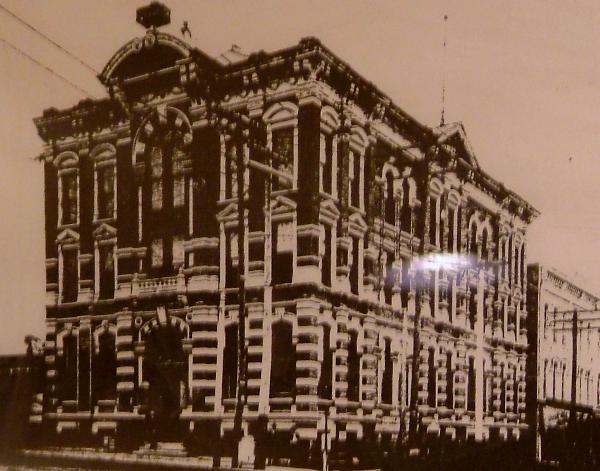
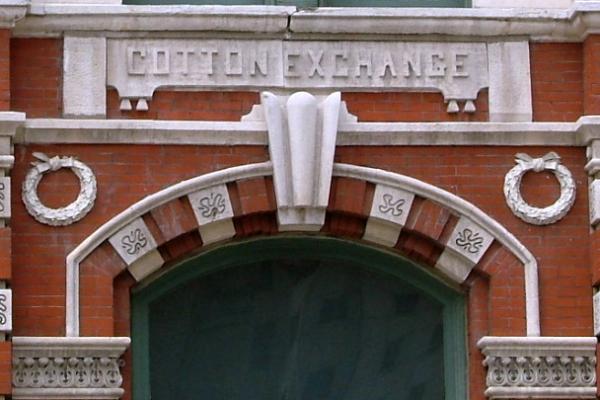
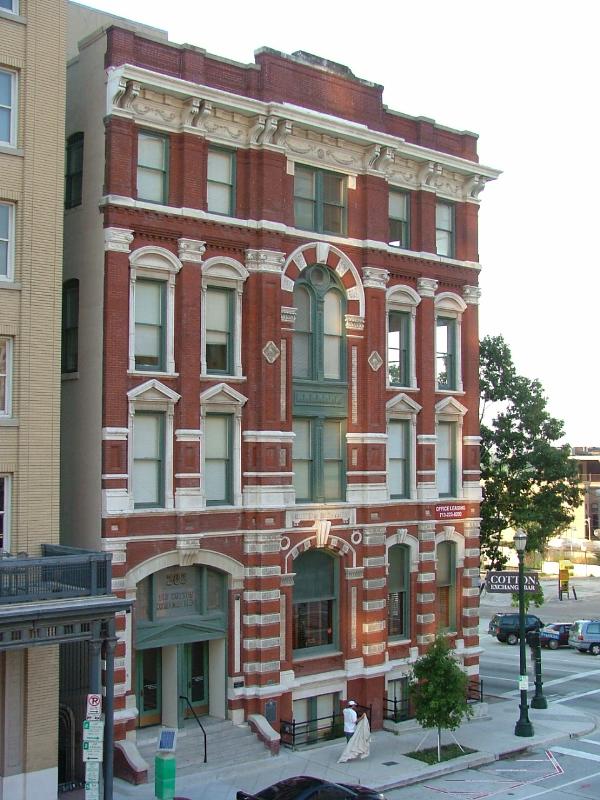
|
Jared Groce came to Texas in 1821 with over 100 slaves and began growing cotton on his plantation near Hempstead. Cotton was Houston’s primary commodity before the discovery of oil, and many of the earliest fortunes in Houston arose from the cotton industry.
Houston’s Board of Trade organized a Cotton Exchange in 1874, signifying cotton’s growing importance in Houston’s early economy. The purpose of a Cotton Exchange was to govern the trading of cotton – to set standards (and prices) for the trading and classification of the commodity. This building was built to house the exchange, with offices on the first floor and the trading floor and galleries on the upper floors.
Eugene T. Heiner, the architect, was sent east by the Exchange to inspect other Cotton Exchange Buildings. Heiner brought back a Classical Revival design with Victorian brickwork and stonework, ornamenting dark red Philadelphia brick with sandstone molding in arches and angles to create contrasts of depth, color and shape. A fourth floor, not part of Heiner’s design, was added in 1907, and the trading floor was moved to the first floor. Old post cards show that a zinc cotton bale was mounted on top of the building in the center.
By 1924, the exchange had outgrown the building, and moved to newer headquarters. By the 1970's, Houston had outgrown cotton and the exchange vanished. The building was restored and renovated into offices in 1971.
|
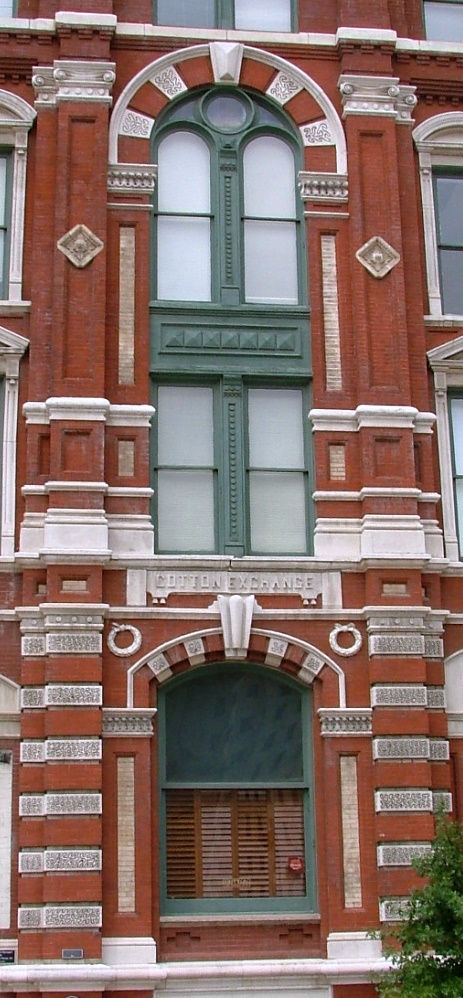
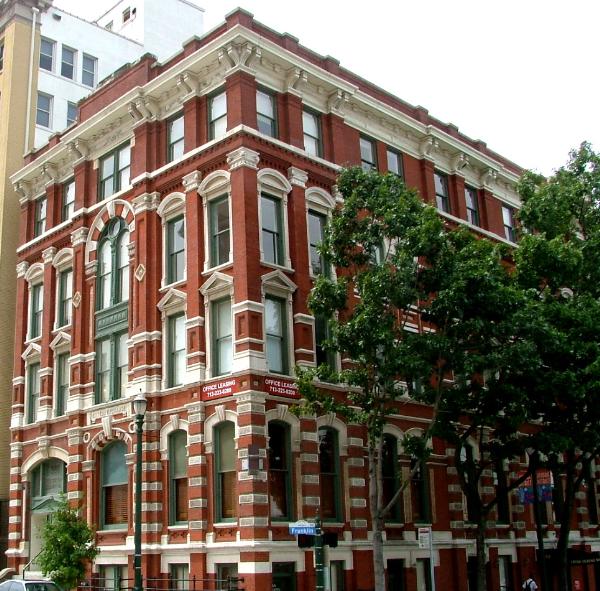
|